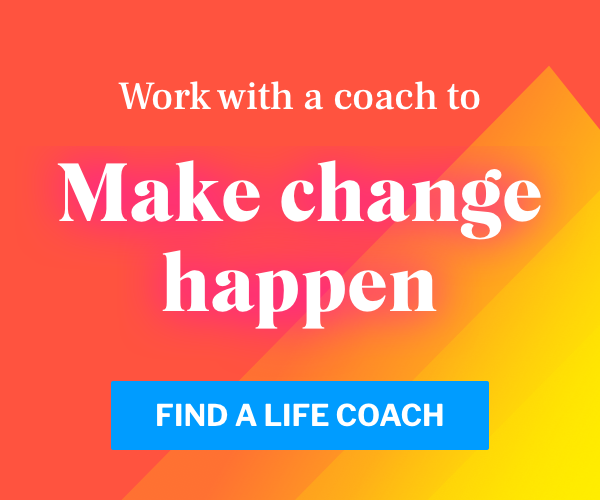We all know the feeling. You pick up your phone to check the time, and thirty minutes later you’re still mindlessly scrolling through an endless feed of content you won’t remember tomorrow.
It’s not you – it’s social media. It was designed to keep you hooked.
These platforms hijack your dopamine system, keeping you addicted with unpredictable rewards and infinite content. It’s like a slot machine in your pocket, and let’s be honest, it is winning big time.
The good news is that you can retrain your brain – and I have some ideas for you to do just that.
So if you’re ready to reclaim those lost hours and start living again instead of just watching life scroll past, sit tight. I’m about to spill the beans on how to kick the scroll habit without becoming a digital hermit.
The dopamine swap: your new best mate
Remember when nutritionists started banging on about “sugar swaps”? The idea was simple: instead of cutting out sweetness entirely (which never works), swap refined sugar for natural alternatives. A piece of fruit instead of a custard cream. Dark chocolate instead of milk chocolate. Small changes that retrain your palate over time.
Your dopamine system works the same way.
Let me explain: not all dopamine hits are created equal. Social media gives you fast dopamine – instant, easy, no effort required. It’s like refined sugar for your brain. But activities that require a bit of work before the reward? That’s slow dopamine. And just like slow carbs, slow dopamine is what actually makes you feel satisfied rather than just craving more.
When you feel that familiar itch to reach for your phone – you know, that twitchy sensation that says “just a quick peek” – reach for a dopamine swap instead:
Instead of Instagram, try:
- A quick sudoku or crossword puzzle
- A five-minute Duolingo lesson (¡Hola, amigos!)
- A few moves of chess on a puzzle app
- Reading a page or two of an actual book (remember those?)
The magic here isn’t just distraction. These activities give you a dopamine reward too, but here’s the difference: your brain has to work for the payoff. Over time, this retrains your dopamine response from “I need instant gratification NOW” to “Actually, I quite enjoy rewards that require a bit of effort.”
Think of it as weaning yourself off dopamine junk food. You’re not cutting out pleasure – you’re just upgrading to the good stuff.
Remove the friction (from the good stuff)
Social media apps are designed to be frictionless. They’re right there on your home screen, one tap away, already logged in, infinite content pre-loaded. It’s easier than making a cup of tea.
Meanwhile, reading a book requires finding it, opening it, and remembering where you left off. Not exactly streamlined, is it?
So flip that equation:
- Delete social media apps from your phone. Yes, really. You can still access them via browser if you absolutely must, but add that friction. Make it slightly annoying.
- Put your dopamine swap apps front and center on your home screen where Instagram used to live.
- Keep a physical book or puzzle book next to where you normally doom-scroll. I’ve got one on my bedside table that’s saved me from many a late-night Instagram spiral.
- Set up a Kindle or reading app to open automatically at certain times.
Make the healthy choice the easy choice, and the unhealthy choice slightly irritating. Your future self will thank you.
The 10-minute rule
Here’s a technique borrowed from addiction psychology: when you get the urge to scroll, tell yourself you can do it – but only after you’ve done something else for ten minutes first.
Pick up that sudoku puzzle. Read those two pages. Some sketching. Ukulele practice. A quick workout. Whatever your dopamine swap is, do it for ten minutes.
Often, the urge will have passed. Your brain got its reward from the healthy activity, and you’ve completely forgotten you even wanted to scroll. It’s like when you were going to have a biscuit but then got distracted making tea, and suddenly you’re not hungry anymore. (Just me?)
And if the urge is still there after ten minutes? Fine, scroll for a bit. But you’ll likely find you scroll less, and feel better about it. Progress, not perfection, my friend.
Understand your triggers
Social media addiction isn’t random. You reach for your phone at specific moments:
- When you’re bored
- When you’re anxious
- When you’re avoiding something difficult
- When you’re lonely
- During transitions (waiting for the kettle, in the queue, between tasks)
Start tracking when you reach for your phone. Keep a note for a few days. You’ll spot patterns faster than you’d think. Maybe you always scroll first thing in the morning (guilty), or when you’re stuck on a work problem, or late at night when you should be sleeping.
Once you know your triggers, you can prepare your swaps. Put a book on your nightstand for morning scrolling urges. Keep a puzzle book at your desk for work avoidance. Have a specific wind-down routine (no screens!) ready for nighttime.
It’s like knowing you always reach for wine at 6pm – once you know the trigger, you can swap it for something else. (Perhaps a grapefruit and tonic? Here’s my full list of grown-up alcohol-free drinks if you’re interested.)
Set boundaries that actually work
“I’ll only check social media twice a day” sounds brilliant until it doesn’t happen. Willpower is exhausting, and frankly, it’s a bit rubbish at its job.
Instead, create systems that do the heavy lifting for you:
Try these:
- Use app blockers during your most vulnerable hours (first thing in morning, last thing at night)
- Designate one device as “social media free” – your work laptop, your tablet, whatever you use most for focused work
- Create a “scroll zone” – only allow yourself to check social media in one specific location (not your bedroom, not your workspace)
- Set a timer when you do scroll, and actually honor it (I know, I know, but try it)
The goal isn’t perfection. It’s progress. If you currently scroll three hours a day, cutting it to ninety minutes is a massive win. Celebrate that instead of beating yourself up about not being perfect.
Replace the social connection
Here’s the hard truth: social media isn’t just about dopamine. It’s also about connection, even if that connection is shallow. You’re seeing what your mates are up to. You’re part of conversations. You’re not alone.
You need to replace that too.
Try this instead:
- Text or ring one friend per day instead of passively watching their stories
- Use social media intentionally: message specific people rather than scrolling feeds
- Engage in online communities around specific interests (forums, Discord servers) where interactions are actually deeper
The loneliness that social media promises to fix but actually makes worse? Real connection fixes that. Not perfectly, and not immediately, but genuinely.
Track your progress and celebrate wins
Your phone already tracks your screen time. Use it. Check your weekly average. Watch it go down. Feel smug when it does. (You’re allowed.)
But also track the positive side:
- How many books did you finish this month?
- How many new chords did you learn on the uke?
- How much better is your sleep?
- How much more present do you feel?
These aren’t small things. They’re your life coming back online.
I remember when I first started tracking this stuff after cutting down on drinking (that’s a whole other story). The numbers were shocking. Three hours a day scrolling? That’s 21 hours a week. Nearly a full day, gone.
Now? I’ve got that time back. And let me tell you, it feels brilliant.
The bottom line
Beating social media addiction isn’t about becoming a digital monk living off-grid in the Scottish Highlands (although that sounds really attractive). It’s about taking back control. It’s about training your dopamine system to crave things that actually enrich your life rather than drain it.
Start with one swap. One boundary. One trigger identified and addressed. Small changes compound. Your brain is plastic – it can learn new patterns. It’s like learning a language in midlife (which I also did) – challenging, yes, but absolutely possible.
The endless scroll will always be there if you want it. But so will the life that’s waiting for you beyond the screen.
What will you reach for next?






Add comment